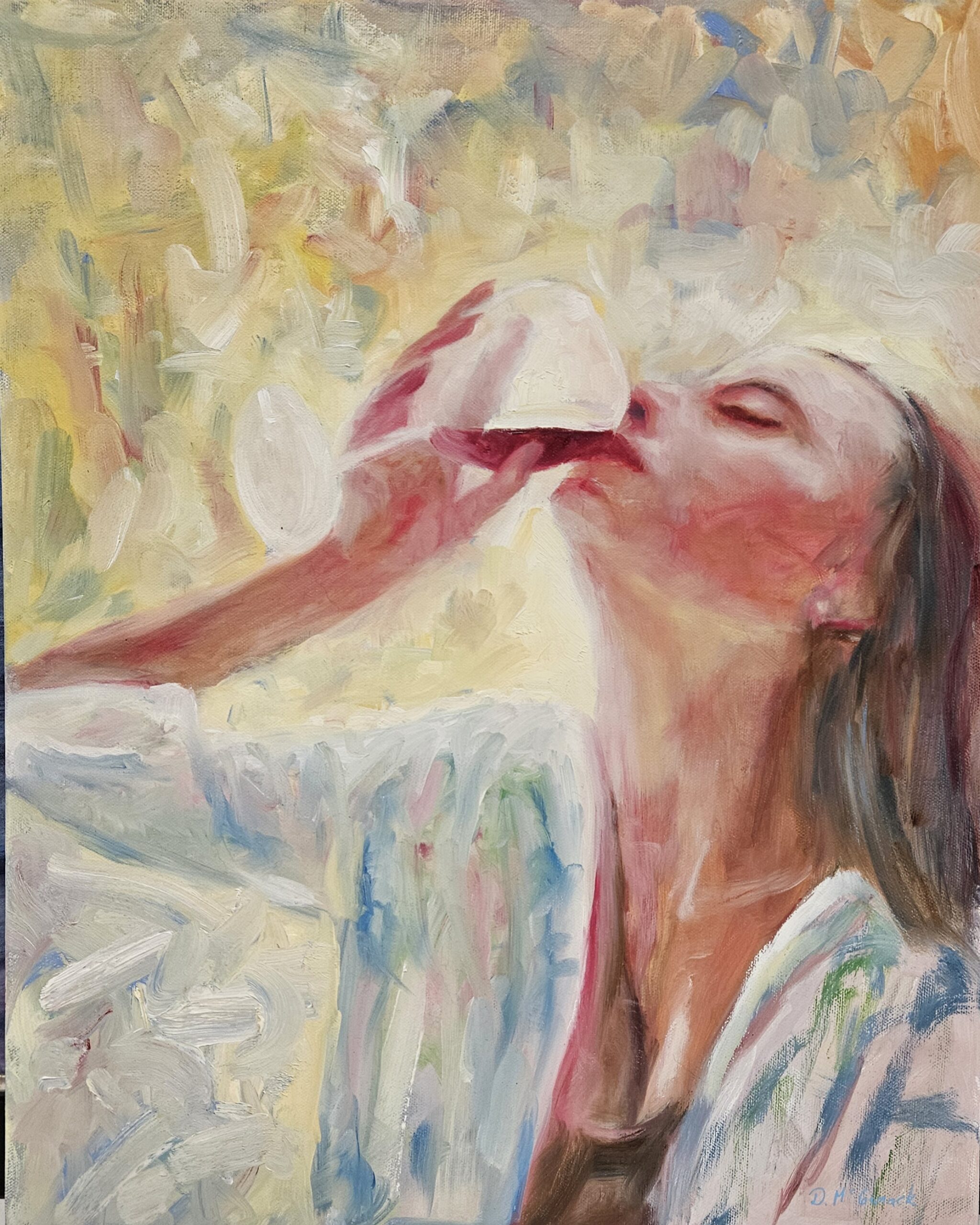The Role of Emotion and Expression in Figurative Oil Painting: An Extensive Evaluation of Subject Matter and Make-up
The interaction of emotion and expression in figurative oil painting functions as a crucial lens whereby one can check out the detailed relationship between subject issue and composition. Artists harness different methods, from color choice to brushstroke characteristics, to grow emotional resonance within their works. This nuanced orchestration not just forms customer perception however also invites a much deeper query into how these elements integrate to show the intricacies of human experience. As we explore this rich surface, one should think about just how certain study light up the broader effects of these creative choices.
Comprehending Feeling in Art
Emotion in art acts as an effective avenue for expression, enabling musicians to share complex feelings with their job. In figurative oil painting, this emotional depth is typically depicted with the depiction of the human number, catching the nuances of human experience. The option of subject, shade scheme, and brushwork all add to the emotional vibration of a piece.
Artists regularly attract upon individual experiences, social concerns, or global themes to stimulate feelings in the visitor. For example, a portrait might show susceptability, while a dynamic figure in motion can represent flexibility or chaos. These psychological strings link the audience to the artwork, fostering a discussion that transcends the visual tool.
Additionally, the interaction in between light and shadow can intensify emotional intensity, leading the audience's stare and drawing focus to specific aspects within the make-up. Using texture in oil painting better includes layers of intricacy, welcoming a responsive feedback that boosts the emotional experience. Overall, comprehending emotion in art is important for appreciating the subtleties that identify figurative oil painting, as it transforms simple representation right into an extensive exploration of the human problem.
Trick Components of Structure
In the world of figurative oil painting, the make-up acts as the underlying structure that organizes visual components and improves the psychological story. Vital elements of structure include equilibrium, contrast, centerpiece, and rhythm, each adding to the general impact of the artwork.
Balance describes the circulation of aesthetic weight within the painting, which can be achieved via asymmetrical or balanced plans. A well-balanced make-up provides stability, allowing the audience to engage with the piece sympathetically - figurative oil painting. Comparison, on the other hand, includes comparing different aspects, such as light and dark or cozy and amazing shades, to direct the viewer's eye and stimulate psychological feedbacks
The focal point is essential, as it routes attention to the most considerable component of the painting, frequently highlighting the emotional core of the narrative. By masterfully integrating these crucial components, artists can craft engaging and emotionally resonant figurative oil paintings that mesmerize and engage their target market.
Topic and Its Effect
Subject plays a critical role in metaphorical oil painting, as it not only functions as the foundation for the narrative but additionally shapes the viewer's interpretation and psychological involvement with the artwork. The selection of topic-- be it a singular number, a team dynamic, or a thematic depiction-- straight influences the emotional ambience shared to the audience.

For example, portraits frequently evoke personal connections, disclosing the intricacies of human expression and character, while scenes illustrating public tasks can create a feeling of belonging or fond memories. The historical and social context of the subject matter enriches the customer's understanding, motivating deeper reflections on societal standards, values, and the human condition.
Various subject matters also create varying degrees of involvement; a dramatic conflict shown with numbers in tension may generate feelings of Go Here stress and anxiety or compassion, while tranquil landscapes can conjure up tranquility and reflection. Eventually, the impact of topic in figurative oil paint is profound, as it works as a channel for emotional resonance, assisting the customer's feedback and analysis, and cultivating a link in between the observer and the artwork. This interplay is essential for the successful communication of the artist's intent.
Techniques for Evoking Feelings
The performance of metaphorical oil paint in sharing emotions is considerably influenced by the strategies employed by the musician. Among the most vital techniques is making use of color concept, advice where the tactical selection of shades can evoke details emotional responses. Warm shades, such as reds and oranges, typically evoke feelings of interest or hostility, while cooler tones like blues and eco-friendlies tend to stimulate calmness or sadness.
One more important technique is the control of light and shadow, referred to as chiaroscuro. This approach enhances the three-dimensionality of numbers, developing dramatic contrasts that can magnify psychological depth. The positioning of light can direct customers' emotions, highlighting specific elements of the structure.
Brushwork also plays an important duty; loose, meaningful strokes can convey power and spontaneity, whereas smoother techniques could suggest harmony or accuracy. Furthermore, the setup of topics within the make-up can affect emotional effect. Close proximity can recommend affection, while distance may suggest isolation.
Inevitably, the mix of these techniques makes it possible for musicians to craft narratives that resonate with the visitor, changing a mere aesthetic experience right into an expressive emotional journey. - figurative oil painting

Instance Researches of Significant Functions
Examining notable jobs of figurative oil paint reveals how numerous methods are used to stimulate effective feelings. One exemplary case is Edvard Munch's "The Scream," where the distorted figure and swirling background share existential fear. Munch's use of shade-- brilliant oranges and deep blues-- magnifies click this link the emotional impact, showcasing just how palette selections can form audience experience.
One more significant work is Pablo Picasso's "Les Demoiselles d'Avignon." Below, strong brushstrokes and fragmented types mirror a tumultuous psychological landscape, challenging typical depictions of the women number. Picasso's ingenious make-up not just captures the customer's attention but likewise invites contemplation on motifs of identification and sexuality.
Additionally, Frida Kahlo's "The Two Fridas" supplies a touching expedition of duality and self-identity. The contrasting figures, linked by a shared heart, exemplify Kahlo's emotional deepness and personal narrative. figurative oil painting. Her precise focus to detail and symbolic aspects serve to involve audiences on a visceral degree
These study underscore the extensive link in between emotion and structure in metaphorical oil paint, exposing just how artists harness method to connect complicated feelings and narratives that resonate across time and society.

Conclusion
Finally, the interaction of feeling and expression in figurative oil painting dramatically enhances the audience's experience and analysis of the art work. Through a mindful selection of topic and compositional methods, musicians convey extensive stories that reverberate on both global and personal levels. The application of color concept, chiaroscuro, and brushwork more enhances emotional deepness, changing each canvas right into a powerful representation of the complexities of the human experience.
In figurative oil paint, this psychological deepness is commonly depicted via the representation of the human number, recording the nuances of human experience.Additionally, the interplay between light and darkness can amplify emotional intensity, leading the customer's stare and drawing focus to particular aspects within the structure. The use of appearance in oil paint further includes layers of complexity, inviting a tactile reaction that boosts the psychological experience.The focal point is important, as it routes interest to the most significant component of the paint, commonly highlighting the emotional core of the narrative. Eventually, the effect of subject issue in metaphorical oil painting is profound, as it serves as a conduit for psychological vibration, assisting the audience's action and interpretation, and fostering a connection in between the art work and the viewer.